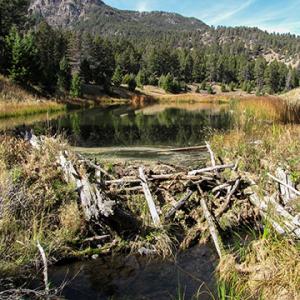New Publication: Murky waters: divergent ways scientists, practitioners, and landowners evaluate beaver mimicry
Date
A new publication by NC CASC team members and others examines beaver mimicry as a conservation technique to restore streams and manage water that is gaining popularity within the natural resource management community because of a wide variety of claimed socio-environmental benefits. Despite a growing number of projects, many questions and concerns about beaver mimicry remain. This study draws on qualitative data from 49 interviews with scientists, practitioners, and landowners, to explore the question of how beaver mimicry projects continue to be promoted and implemented, despite the lack of comprehensive scientific studies and unclear regulatory requirements. Specifically, we investigate how these three groups differentially assess the salience, credibility, and legitimacy of evidence for beaver mimicry and analyze how those assessments affect each group’s conclusions about the feasibility, desirability, and scalability of beaver mimicry. By highlighting the interaction between how someone assesses evidence and how they draw conclusions about an emerging natural resource management approach, we draw attention to the roles of experiential evidence and scientific data in debates over beaver mimicry. Our research emphasizes that understanding how different groups perceive salience, credibility, and legitimacy of scientific information is necessary for understanding how they make assessments about conservation and natural resource management strategies.
Tori Pfaeffle, USGS Research Social Scientist Amanda Cravens, and NC CASC/USGS Deputy Director Aparna Bamzai-Dodson contributed to this paper. Read the full paper. The paper was a product of this project.


